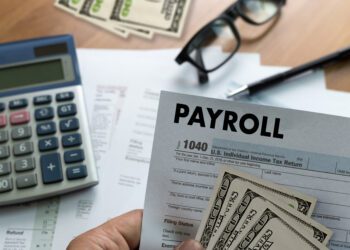In the mid-1990s, Safelite, a windshield repair company, made a bold move. It replaced hourly wages with performance-based pay, offering employees the chance to earn more money the more windshields they installed. The results were striking.
Within a year, productivity surged by approximately 44 percent.
“That’s a massive increase,” says George Georgiadis, an associate professor of strategy at the Kellogg School of Management and an expert on performance-based incentives.
The reason for this productivity bump was nuanced. About half of the increase came from existing workers putting in more effort. The other half was due to a shift in the type of employees Safelite attracted. “The least productive employees left, and the new hires who replaced them were significantly more skilled and productive,” Georgiadis explains.
Safelite’s success story quickly became a textbook example in economics, illustrating how performance-based pay could boost productivity by both motivating current workers and attracting better talent.
Inspired by this example, many companies came to believe that continually increasing incentives—such as bonuses, commissions, or stock options—would naturally attract the best talent and drive productivity even higher. Indeed, many growth-focused companies, including tech giants like Google and Netflix, have adopted increasingly generous incentive structures, hoping to attract and retain top talent and keep profits climbing.
Yet despite its widespread popularity, this approach has a critical blind spot. It assumes that steepening incentives always leads to better employee selection—that it will attract more high-skilled and productive workers. But research by Georgiadis and his colleague Henrique Castro-Pires of the University of Miami challenges this assumption.
The hidden downsides of steeper incentives
To that end, Castro-Pires and Georgiadis developed a mathematical model to explore how prospective employees respond to changes to incentive pay structures.
Their model considers the following scenario.
An employer, such as the manager at an organization, posts a job that offers performance-based pay.
Potential applicants—who vary in skill level—decide whether to apply based on how compelling the pay structure is compared with their other job opportunities. Each applicant undergoes a screening test that high-skilled applicants have a higher likelihood of passing than low-skilled applicants.The employer then chooses whom to hire among the applicants who pass the test, and each hired worker decides how hard to work.
Common wisdom suggests that increasing incentives would naturally attract more high-skilled applicants. But the researchers found that higher incentives tend to attract both more high-skilled and more low-skilled applicants.
In fact, depending on the job market, steeper incentives can disproportionately attract low-skilled workers. High-skilled workers often have more and better job opportunities than low-skilled workers, making them relatively scarce in the applicant pool. As a result, increasing incentives can inadvertently increase the proportion of low-skilled applicants, ultimately harming the quality of the employer’s workforce.
Practical steps for employers
While the researchers’ model doesn’t provide a one-size-fits-all solution, it does offer practical guidance for companies looking to optimize their incentive pay structures.
Georgiadis suggests that employers should design incentives that specifically appeal to high-skilled employees more than they do to low-skilled employees.
“If you simply increase pay across the board, everyone benefits and more people apply from both pools,” Georgiadis says. “But if you restructure incentives so that high-skilled employees are better off while low-skilled employees are not, then you improve selection by attracting more of the former.”
Read the full article by Abraham Kim, Henrique Castro-Pires and George Georgiadis / Kellogg Insights












